If you are following the low FODMAP diet, have irritable bowel syndrome (IBS) or are curious about what oligosaccharides are, this article has information you need.
Let’s Talk About the “O” in FODMAP
The acronym FODMAP stands for Fermentable Oligosaccharides, Disaccharides, Monosaccharides and Polyols.
The “O” in FODMAP stands for oligosaccharides (sometimes referred to as “Oligos”) — a category of short-chain carbohydrates that comprises both fructans and galacto-oligosaccharides (GOS). This is a large and diverse category, populated with items from most of the major food groups.

The Chemistry of the “O” in FODMAP
Oligosaccharides, for our purposes, are molecules that typically contain 3 to 10 linked monosaccharide units, or “simple sugars.” In the case of fructans these monosaccharides are fructose, and in the case of GOS they are galactose.
Oligosaccharides consisting of up to 60 monosaccharide units are often referred to as polysaccharides, and according to Dr. Emma Halmos and Dr. Peter Gibson of Monash University, these longer chain molecules, such as inulin, behave like FODMAPs in their ability to be fermented and to induce gut symptoms.
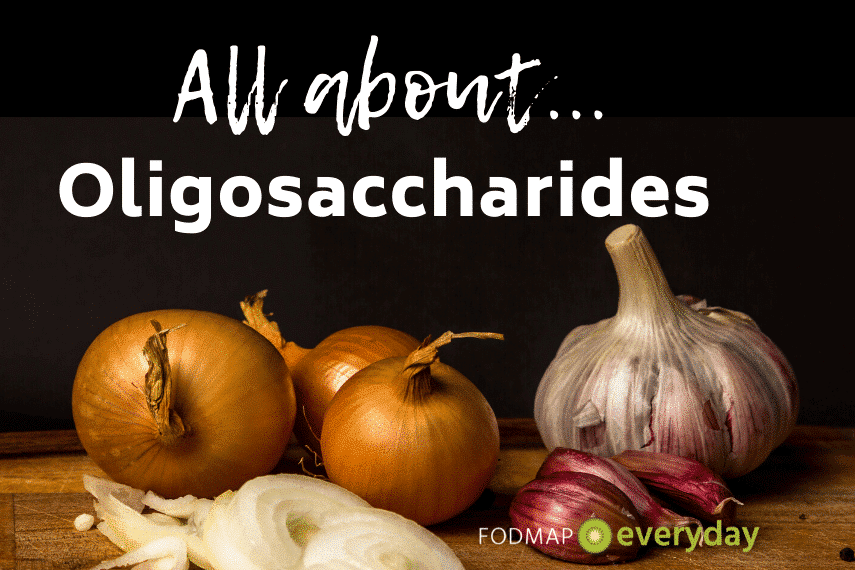
Symptoms of Oligo Excess
Oligosaccharides are not absorbed by humans whether they have irritable bowel syndrome (IBS) or not because we lack the enzymes needed to break the bonds between the chains that make up these molecules. This is why eating beans, which are high in Oligos, often results in flatulence.
Instead of being absorbed and used as fuel, oligosaccharides travel through the small intestine to the large intestine where they are fermented by bacteria.
This is an entirely normal process, but for those with IBS, the gas that accumulates as a by-product of bacterial fermentation pushes on the walls of the large intestine, causing pain, abdominal bloating, flatulence, and altered motility (diarrhea and/or constipation). These symptoms can be mild and intermittent or severe and persistent enough to have a significant negative impact on a person’s quality of life.
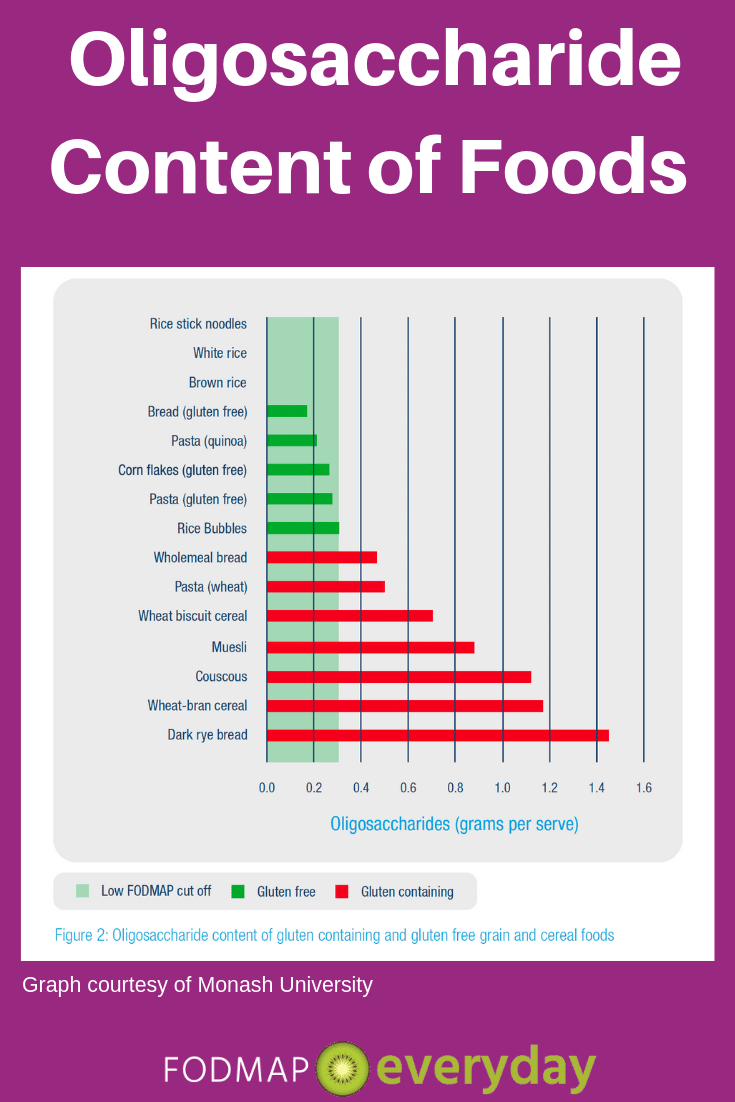
Food Sources of Oligosaccharides
Oligosaccharides can be found in a wide array of food, but they are most heavily concentrated in wheat, rye, onions, scallions, many breads, cereals, pasta, and legumes. In fact, if you scroll through the Monash University FODMAP Diet app, you will find that nearly every item in those categories contains fructans, GOS, or both.
Nuts and vegetables are also well represented in this group, but the head-scratcher for most people is fruit, which we tend to associate with the sweeter (“M” and “P”) FODMAP categories.
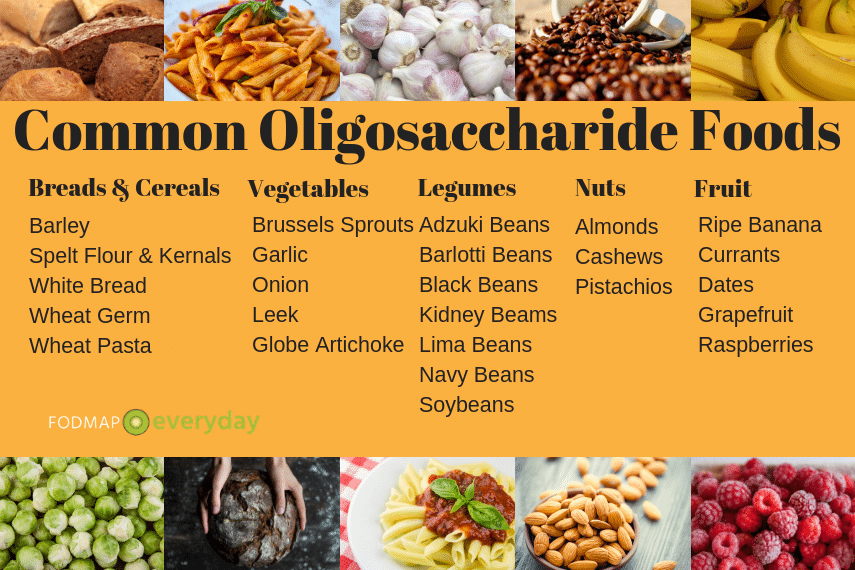
Some common foods that contain oligosaccharides include:
- Banana (ripe)
- Barley
- Brussels sprouts
- Cabbage
- Chickpeas
- Jerusalem artichoke
- Lentils
- Leek
- Pinto beans
- Watermelon
Oligosaccharides Are Water-Soluble
An important thing to understand about oligosaccharides is that they are water-soluble. This means that they will leach out into soup and other liquids even if the oligos food source (like garlic or onion) is removed.
Luckily, there are some workarounds for this, as you will see from our FODMAP Everyday® articles and recipes. Be sure to read Not All Low FODMAP Garlic-Infused Oil is Created Equal, and also check out our recipes for Low FODMAP Garlic-Infused Oil and Low FODMAP Onion-Infused Oil.
Oligosaccharides are not oil-soluble, which is what allows us to pack these oils with onion and garlic flavor.
Health Benefits of Oligos
Fructans and GOS can act as prebiotics – compounds in food that stimulate the growth and activity of beneficial gut bacteria, in particular, bifidobacteria and lactobacilli.
Prebiotics have been shown to:
- Alleviate infectious and antibiotic-associated diarrhea
- Help protect against colon cancer
- Increase the bioavailability and uptake of calcium and magnesium
- Promote satiety and weight loss
Frequently Asked Questions
Oligosaccharides are a type of sugar, but they’re not sweet like table sugar. They’re made up of a few sugar units linked together, kind of like a short chain. You can find them in foods like beans, lentils, onions, and garlic.
Our bodies don’t break the chains down completely in the stomach or small intestine. Instead, they move into the large intestine, where the bacteria there do break them down. This can sometimes cause gas or bloating—but those sugars also help feed the good bacteria in your gut, which is a good thing for your health.
So in short: oligosaccharides are a kind of sugar found in certain foods that our bodies can’t fully digest, but our gut bacteria love them.
The most common oligosaccharides are:
1. Fructooligosaccharides (FOS) – Found in foods like onions, garlic, leeks, asparagus, and bananas.
2. Galactooligosaccharides (GOS) – Found in beans, lentils, and chickpeas.
3. Raffinose – Found in beans, cabbage, broccoli, and whole grains.
4. Stachyose – Also found in beans and some vegetables like soybeans.
These are all made of small chains of sugars, and like mentioned before, our bodies don’t fully digest them. That’s why they can cause gas or bloating in some people, especially those with sensitive guts like in IBS. But they also help feed healthy gut bacteria, so they do have benefits too.
Oligosaccharides are both good and tricky, depending on your body.
Why they can be good:
—They feed the good bacteria in your gut, helping your digestion and boosting —your immune system.
—They act like natural fiber, which is good for overall gut health.
—They’re found in healthy foods like beans, onions, and bananas.
Why they can be a problem for some people:
—Our bodies can’t fully break them down, so they travel to the large intestine, where bacteria digest them—this creates gas, bloating, or discomfort in some people.
—People with conditions like IBS (irritable bowel syndrome) are especially sensitive to them.
Bottom line is that oligosaccharides are healthy for most people, but if you have a sensitive stomach or IBS, you might need to limit them or eat them in smaller amounts.
Our bodies can’t fully break them down, so they travel to the large intestine, where bacteria digest them—this creates gas, bloating, or discomfort in some people.
Oligosaccharides are hard to digest because our bodies don’t make the right tools (enzymes) to break them down—only gut bacteria can, and that process creates gas.
Bottom Line
It’s important to remember that many high FODMAP foods – especially those in the “O” category – are extremely healthy and should not be eliminated entirely in the long run.
That’s why it is so vital that you test your sensitivity to items rich in fructans and GOS during the Challenge and Integration Phases of the low FODMAP diet.
Once you determine your personal tolerance level, you’ll find that you are able to incorporate small servings of foods that contain these FODMAPs into your daily diet.
Be sure to read all of the other articles in this series!
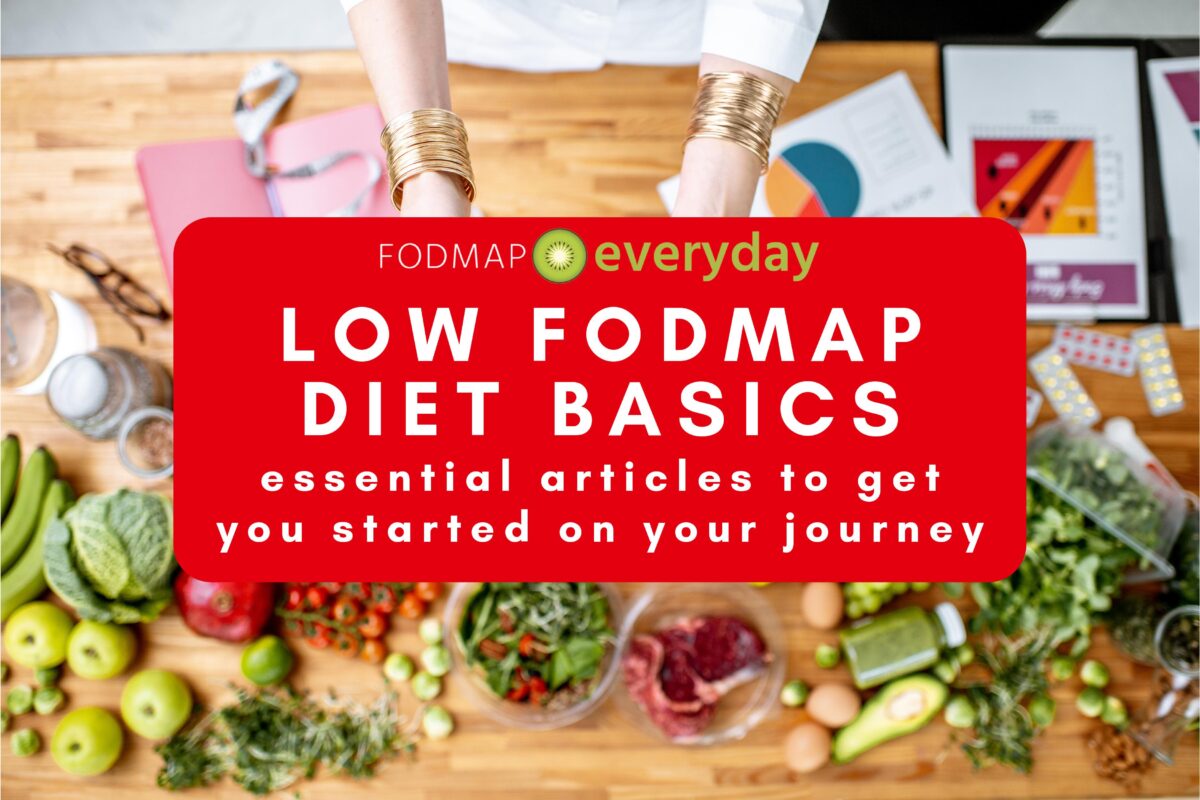
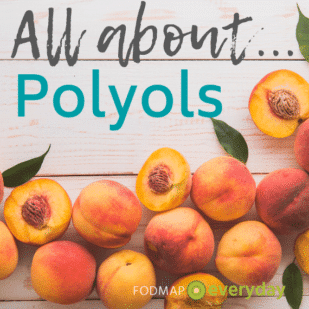
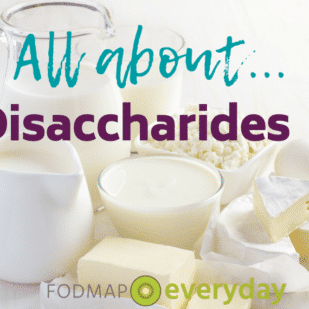



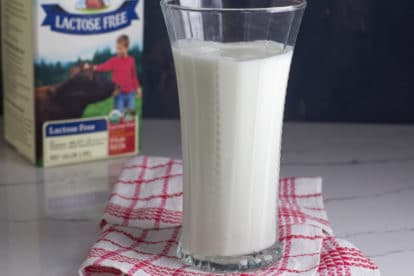

the o in fodmap what about xos ?
Hi Doris, we asked Erica Ilton, RDN to answer your question and this is her response:
“I am not quite sure what Doris is asking, but assume it’s whether xylooligosaccharides (XOS) are FODMAPs or not.
If so, I do know that they are short-chain carbs and prebiotics, but I’m not finding anything about them specifically being FODMAPs in my preliminary research…which means that my answer would be an extrapolation. One article from 2015 (Muir, Gibson, et al) does say that XOS “might act as FODMAPs” but I’m not sure if more research has been done in the past 5 years. A 2006 study in severely constipated pregnant women found “no adverse effects” with intake of 4.2 g XOS daily for 4 weeks, but that’s not much to go by!”
XOS do not appear to be present naturally in food and are available in supplemental from many companies, so my suggestion to Doris would be to do a test-to-tolerance “challenge” the same way we do with other FODMAPs.”
The statement pertaining to “Health Benefits of Oligos” confuses me. Especially, regarding fractans and GOS acting as prebiotics. Confused I am. I appreciate the information posted by “Fodmapeveryday.com.” Please respond. I need this info. Thank you, Millie at bullseyews@aol.com.
Hi Millie, we understand that aspects of the diet can be confusing. One reason why the more restrictive Elimination Phase is meant to be short is because it does remove or greatly minimize fructans an GOS (and therefore prebiotics) from the diet, such as those mentioned in that section of the article. Long-term, this type of restriction could negatively affect the microbiome. Removing them at first allows your system to calm down and for you to create a clean slate, so to speak, for the Challenge Phase. At that point, you would systematically re-introduce foods that contain fructans and GOS to assess what amounts you can eat, and in what frequency, without triggering IBS symptoms. By the time you get to the third stage of the diet you will have expanded it to include foods that do contain a certain amount of FODMAPs and therefore you will have re-introduced prebiotics and be able to benefit from what they bring to the table.